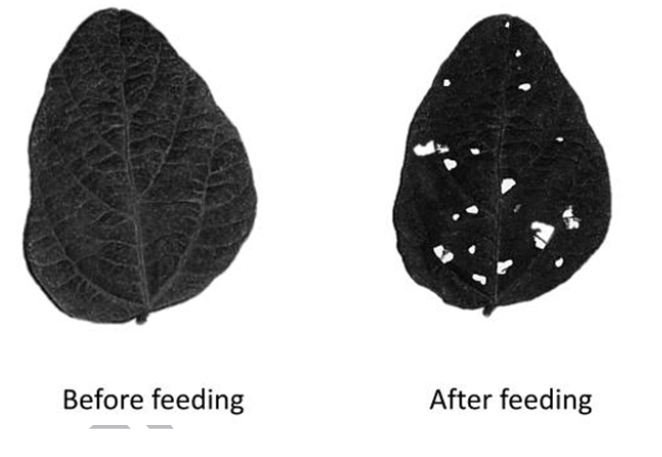Using Smartphone Application to Estimate the Defoliation Caused by Insect Herbivory in Various Crops
Using Smartphone Application to Estimate the Defoliation Caused by Insect Herbivory in Various Crops
Muhammad Irfan Ullah1*, Muhammad Arshad1, Sajjad Ali2, Asad Abdullah1, Samina Khalid3, Hafiz Muhammad Aatif4, Syed Muhammad Ali Zahid1, Muhammad Afzal1 and Jaima Molina-Ochoa5
Natural feeding of S. litura larvae.
Artificial regular damage of leaves (upper portion showed, a = healthy leaf, b = 25% damage, c = 50% damage and lower portion is the reconstruction of damage in BioLeaf application for damage quantification)
Artificial irregular damage (Type 1, and II), a = healthy leaves, b = irregular damage, c = hole and border reconstruction in BioLeaf application for damage quantification.
Infected leaf of citrus due to citrus canker disease (a = natural damage, b = quantification of damage by BioLeaf application).
Reference object to convert the area from pixel to cm2.
Relationship of BioLeaf analysis with ImageJ and CI-202 LAM for quantification regular damage of soybean leaves (A), sunflower leaves (B), soybean leaves (C), sunflower leaves (D), and for quantification of natural damage of soybean and sunflower leaves due to S. litura feeding (E), and quantification of infected leaves of citrus due to citrus canker disease (F).
















